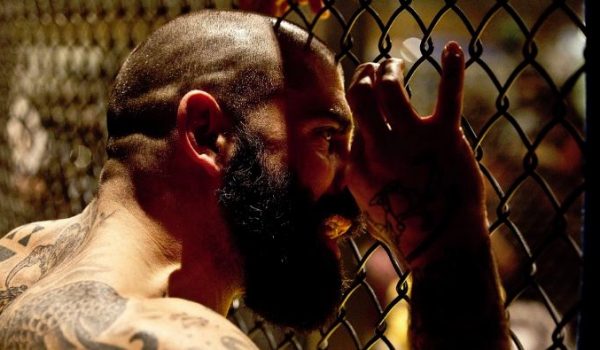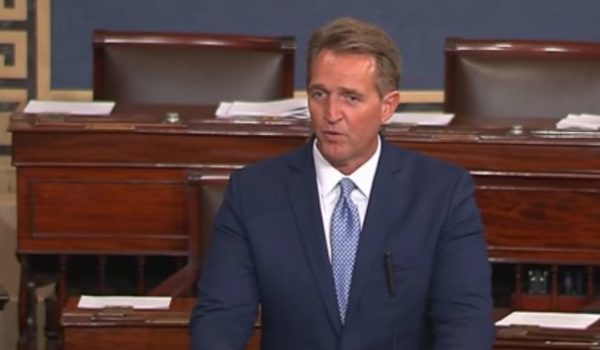
The government isn’t supposed to suppress lots of speech just because a small fraction of it is bad. As the Supreme Court said in NAACP v. Button (1963), “Broad prophylactic rules in the area of free expression are suspect.” Such rules are like burning “the house to roast the pig,” it observed in Butler v. Michigan (1957).
But a federal appeals court recently promoted such rules in a case called Feminist Majority Foundation v. Hurley. The court’s 2-to-1 ruling, issued on Wednesday, ruled that the University of Mary Washington could be sued for “sexual harassment” under Title IX, not for misconduct by its employees, but for comments made by users of an anonymous social media smartphone application, Yik Yak. The court’s ruling will have profoundly negative implications for free speech, as the Foundation for Individual Rights in Education, law professor Eugene Volokh, and Reason Magazine’s Robby Soave have noted.
As FIRE’s Samantha Harris explains:
Will this presidential election be the most important in American history?
The alarming upshot of the ruling is its suggestion that Title IX may sometimes require colleges to censor or block all students’ access to certain internet sites or services based solely on anonymous statements made in an online forum that the university does not control, by people who may not be on campus, or even affiliated with the university at all.
These anonymous comments were derogatory towards campus feminists who sought to prevent fraternities from operating on campus. The court said that to avoid liability, the university should have taken more action against the anonymous comments, which were allegedly harassing and threatening. Its publicly condemning the comments was not enough. (The Court said a jury could potentially find the comments were “true threats,” although the amicus brief of the Foundation for Individual Rights in Education explained that the comments likely did not constitute such threats. Ominously, in footnote 7 of its ruling, the Court suggested the comments might give rise to “harassment” liability even if they were not threatening. In a future post, I will explain why this vague footnote is far more ominous than a casual reader might think.).
But what action could the university really have taken against these anonymous comments? The court suggested a series of alternatives. But all the actions the court suggested were either unreasonable, ineffectual, or both.
The court said that the university could be held liable for the comments in part because it could have “disabled access” to Yik Yak on campus. But only a fraction of the comments on Yik Yak were even arguably threatening. Shutting down an entire medium of communication merely because some users misuse it is like burning “the house to roast the pig,” and deprives innocent people of their free speech rights in violation of the First Amendment. For this reason, the Supreme Court ruled in Sable Communications v. FCC (1989), that the government could not ban sexually-oriented phone messages, just because a few children might improperly access them.
Speech at state universities is fully protected by the First Amendment, as the Supreme Court made clear in its rulings in Healy v. James (1972) and Papish v. University of Missouri Curators (1973); indeed, it is coextensive with free speech in society generally. Nor does there appear to be a “sexual harassment” exception in colleges for otherwise protected speech: the Supreme Court said in 1999 that colleges are free to avoid taking disciplinary action for “harassment” that would lead to “constitutional or statutory claims” against them, and in 2008, another federal appeals court recognized at there is no “harassment exception to the First Amendment’s free speech clause,” in striking down a sexual harassment code that could be applied to classroom discussion of gender and sexual issues.
Recognizing that blocking Yik Yak might present problems under the First Amendment, the court suggested that if the university did not want to try that, it could do something else to try to stem the “harassment,” like holding “mandatory assemblies” for the student body, or publicly denouncing the harassing or threatening comments more vigorously than it did. But forcing thousands of innocent students to take time off from their studies or jobs to attend a mandatory assembly would have penalized them for the wrongdoing of others.
Any such mandatory assembly would likely have fueled resentment by many students against campus feminists for filing the complaint that led to the university forcing students to attend the assembly. That resentment could easily have triggered retaliation against the feminists for complaining. (Ironically, the court also ruled that the university could be sued for “retaliation” under Title IX — not just “sexual harassment” — for failing to prevent commenters on Yik Yak from continuing to send derogatory messages after the campus feminists filed a Title IX complaint against the University with the Education Department’s Office for Civil Rights, where I used to work.
But the court’s own suggested “remedies” for the harassment would have fueled far more resentment among the University’s student body, and made any “retaliatory” harassment spread and get worse). Public denunciations of threatening Yik Yak posts would likely have been pointless: as the court itself emphasized, threats are already forbidden by Virginia state criminal law. If the prospect of being investigated and jailed by the police does not deter a threat, empty words from a college official surely would not. No one needs to attend “mandatory assemblies” or “anti-sexual harassment training” to know that threats are legally forbidden. After a certain point, such public denunciations would simply have reminded the public of the existence of the threats, without doing anything to stop them, damaging the university’s public image to no end.
Given the ineffectual nature of these alternatives, and its inability to identify those responsible for making anonymous “harassing” comments, a university, to avoid liability, would eventually pursue the most speech-restrictive alternative: blocking access to Yik Yak, which would at least temporarily hinder the “harassment.” The net result would be burning the house (of free speech) to roast the pig (of sexism). While that might trigger a First Amendment lawsuit, the college might do it anyway: Damages are not available against a state university under the First Amendment, unlike Title IX, which provides for uncapped damages. Title IX, unlike the First Amendment, abrogates state colleges’ sovereign immunity. For this reason, and optical reasons, most colleges would rather lose a First Amendment lawsuit than a Title IX sexual harassment lawsuit, and would prefer to restrict constitutionally-protected speech, rather than run the risk of a reputation-damaging sexual harassment lawsuit.
Wednesday’s ruling by the Fourth Circuit Court of Appeals fundamentally distorted the Title IX statute in an effort to pressure it to restrict speech like this — and thumbed its nose at a Supreme Court ruling limiting the reach of Title IX. The Supreme Court described when schools can be held liable for sexual harassment by students in Davis v. Monroe County Board of Education (1999). To be liable, the Court said, the harassment must be in a situation where the school has “control” over both the harasser, and the “context” in which the harassment occurs. But the University of Mary Washington had control over neither, judging from the lack of supporting allegations in the plaintiffs’ complaint. As Judge Steven Agee noted in his dissent from the appeals court’s ruling, it was simple speculation to assume that the harassing comments were made by students, or were made on campus, rather than by nearby residents of the City of Fredericksburg. And as both Judge Agee, and the trial judge whose ruling was reversed by the appeals court, observed, the comments were not in a “context” that the university had any real control over.
The Supreme Court’s Davis decision ruled that schools are not liable for negligence in failing to prevent student harassment, but are only liable if they are “deliberately indifferent” to sexual harassment, and only if that indifference “causes” a student to lose access to education, rather than coinciding with continued harassment. Schools, it said, need not “purge” themselves of “actionable harassment” to avoid liability, or “remedy” the harassment. Nor are schools liable for simple “negligence” in responding to harassment. As long as they make good faith efforts against harassment that are not irrational, schools have met their legal obligations, even if they decline to pick the “remedial” measure preferred by a complainant.
The Fourth Circuit, however, ignored this guidance, saying that the University needed to take action “reasonably calculated” to prevent and deter harassment. This is the wrong legal standard. The duty to take “reasonably calculated” action is a synonym for negligence liability, meaning that the Fourth Circuit replaced the “deliberate indifference” standard laid down by the Supreme Court with the very “negligence” standard that the Supreme Court rejected. In the workplace, as the Supreme Court explained in Faragher v. Boca Raton (1998), courts use a “negligence” standard for assessing whether an employer is liable for failing to prevent sexual harassment among co-workers. The words “reasonably calculated” are used in such court rulings, as a synonym for negligence. By contrast, a more demanding showing of “deliberate indifference” applies when students sue schools for sexual harassment. Plainly, there was no such deliberate indifference shown by the University of Mary Washington. It responded to the campus feminists’ harassment complaint, even if not in the manner they might have preferred, and indeed, its actions were reasonable in light of the First Amendment constraints upon it. In a sensible world, it would not be deemed liable for neglgience, much less deliberate indifference.
Indeed, by holding the university liable in large part just because the “harassment” continued (even though it was anonymous and difficult to address), the Fourth Circuit ignored its own past rulings, which recognize that an institution’s actions can be “reasonably calculated” to prevent harassment, and not even amount to negligence, even if harassment continued despite the institution’s reasonable efforts. (See, e.g., EEOC v. Xerxes Corp., 639 F.3d 658, 674-75 (4th Cir. 2011)).




